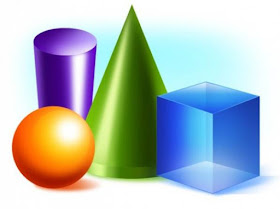Here's the first guide I want to share with you - painting Space marine tactical, "simple level", just main theory points and simple techniques.
I want to start with theory part. I used it always, it doesn't matter the race or size of the miniature: space marine, orc or big dragon. The principle is the same. And I will always refer to this part further in this tutorial and in the next one about Sergeant.
"Theory".
1. Lighting source
At first we have to determine the position of the lighting sourse for your miniature. If we haven't any specific sources (fire, glowing crystals or something else), we accept zenital ligth (from above and with little angle from above), which imitate natural sunlight.
2. Lighting intensity
It's an important point and, frankly speaking, it's still difficult to me to maintain it on the whole miniature because I like to paint all details everywhere and often lose "the whole picture". But don't do needless work. If object is located farther from the light source, it will be illuminated weaker. And on the contrary - if object is located closer to the light source, it will be illuminated stronger.
3. Light and shadow.
Light and shadow allow us to convert flat picture to the figure with volume:
What happens to the color under the influence of light?
Each object has its "real" color. In different books it is called "local". I prefer to call it "basic." For lemon it will be yellow, for ultramarine tactical it will be ultramarine color, for Dark Angel - green and so on. Further, the light distorts it and we have another color on illuminated parts and another one color in shadows. And be aware that different light distorts the base color with different way, as you can have yellow sunlight, orange light from fire, blue moonlight and so on..
Each object has its "real" color. In different books it is called "local". I prefer to call it "basic." For lemon it will be yellow, for ultramarine tactical it will be ultramarine color, for Dark Angel - green and so on. Further, the light distorts it and we have another color on illuminated parts and another one color in shadows. And be aware that different light distorts the base color with different way, as you can have yellow sunlight, orange light from fire, blue moonlight and so on..
In addition, there is an important point - the material of your object, because different materials have different reflection. I like this picture:
It shows that feature of highly reflective materials is highest contrast and multiple glare and reflection (reflected light). Let me note that the reflex is always less than the intensity of the illuminated areas and change color depending on whether they reflect.
4. Lighting on different geometric figures.
It seems to be very simple, but often I see mistakes and hear questions - how to highlight this or that parts. So I want to stay here a little bit.
In the painting process I divide miniature for simple geometric figures in my mind. So mainly I have: sphere, cylinder/cone and parallelepiped.
In the painting process I divide miniature for simple geometric figures in my mind. So mainly I have: sphere, cylinder/cone and parallelepiped.
Spherical parts - helmets, heads, shoulder armors, bodies and others - are highlighted by the circle:
Highlights on cylinders and cones are always along the axis! (not across), no matter what location they are.
And parallelepipeds:
So I think that that's all that I need to take brush and start painting.
Painting.
1. Armor.
I chose GW Ultramarine for "base" color:
Usually at this point I decide how much will "shine" my armor on the highlights to make the necessary contrast. Tactical will have not very shiny armor, so I will do light / shadows fairly standard.
Shadows.
Blue marks - 1st shadows GW Ultramarine + black
Dark blue marks - 2nd shadows GW Ultramarine + more black.
Highlights.
Orange marks - 1st highlights GW Ultramarine + white
Yellow marks - 2nd highlights GW Ultramarine + more white
Edges - GW Ultramarine + more more white .
Corrugated parts:
1. GW Boltgun metal on raised parts
2. Black wash to the recesses
3. restore GW Boltgun metal on raised parts
4. highlights with GW Mithril silver.
2. Gold
I used metallic paints because o my mind it's more easy and quickly technique for game miniatures.
1. Base - neutral grey
2. Shadows - neutral grey + black
3. Highlights - neutral grey + white
4. Edges - white
1. Base - GW Rhinox hide
2. GW Rhinox hide + gold - all surfaces for gold parts except the deepest
3. Gold - 1st highlights
4. Gold + Mithril silver - 2nd highlights, edges
You can do the metal more interesting, adding different color glazing in shadows and so on.
3. Steel parts
1. Base - GW Boltgun metal
2. Black wash - GW Nuln oil
3. Restore Boltgun metal
And again you can do the metal more interesting, adding different color glazing in shadows and so on.
3. Restore Boltgun metal
And again you can do the metal more interesting, adding different color glazing in shadows and so on.
4. Details.
White helmet:
2. Shadows - neutral grey + black
3. Highlights - neutral grey + white
4. Edges - white
Lens:
1. Dark red
2. Flat red
3. Red + orange
4. White glare
And other details which was done with the same principle - base color, base color with black in shadows, base color with white on highlights.
I will talk about freehands in the next tutorial with Sergeant.




























This tutorial revolutionized my painting style 5 years ago and works extremely well with wet blending so THANK YOU! I wish more tutorials would use the colored lines like you have to show precisely where the shadows and highlights are placed.
ReplyDelete